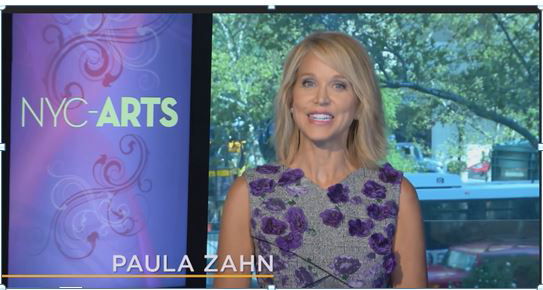One year after “giving back primetime,” WNET announces growth in membership

One year after “giving back primetime,” WNET announces growth in membership
During a season defined by experimental fundraising among member stations across the U.S., the influential WNET in New York City has gained particular attention for its innovations. In July of 2016, the station began testing a new approach for its flagship THIRTEEN. Abandoning quarterly pledge drives, it decided to “give back primetime” to its viewers.

After dedicating Thursday nights to entertaining pledge programming, it then promised viewers it would no longer interrupt its usual programming schedule with long pledge periods. Instead, THIRTEEN simply began asking viewers, on a regular basis, to become members or renew their support.
Last fall, only three months into the change we spoke to WNET’s leadership about the strategy. Click here for 2016 post. Now that a full financial year has passed, WNET has tentatively identified it as a success. “Back then, I was cautiously optimistic,” says Neal Shapiro, WNET president and CEO. “Now, I think I am moderately optimistic. I think we’re happy where we are but we also recognize we are trying to do this slowly and learn as we go. But if you had told me a year ago we would be where we are right now, I would have been delighted.

Growth Through Coordination

Where the station is right now is enough to allow Shapiro and his staff to breathe a sigh of relief. “We came within two percent of the prior year’s fundraising budget,” reports Kent Steele, executive director of broadcasting. “But for membership overall, company-wide, we were 15 percent over the prior year” for fiscal 2017. While the 15 percent growth includes everything from on-air fundraising to coordinated mail campaigns and major giving, he believes the pledge-free experiment drove those results. “That’s the headline for me,” Steele says.
Shapiro agrees. “Coordinating all our messaging gave us much more power than doing things separately,” he says. “The reason that our snail mail is doing better is because we link that up with our messaging on the air. Even though we know the mail is an expensive, old-fashioned type of fundraising, it references the fact that we’re doing a very big, bold experiment in primetime. We did so because we’ve heard what you’ve been telling us. I think that’s the reason our response rate was so much higher.”
The Value of Communication
Delivering that viewer-centric message was central to the approach—and just as important as a synergistic campaign. THIRTEEN announced the change a year ago with a series of spots telling viewers they had heard their frustrations about pledge and were making changes as a result. “Our viewers are smart and they’re aware of what we’re doing,” says Steele. “I think they responded to the fact that their favorite shows weren’t gone for two weeks.

As with many stations, previous years had seen regular drops in viewership during August and December pledge periods. But over the past year, those numbers stayed close to level. “We didn’t see those dives,” says Steele. THIRTEEN had higher audience ratings in December of 2016 compared to December of 2015. “And in June of 2017 compared to 2016, we were about 50 percent higher than what had been a normal pledge week,” Steele says. “We’re very happy about viewership.”
The WNET Board shares that satisfaction. “I can describe the board in three words: thrilled and delighted,” says Shapiro. “For a long time, they talked about how much they haven’t liked pledge. They understood why we need it but they didn’t like it. To say we’ve heard you, we tried something, and we’ve had real positive results, they are very, very happy.”
Steele says the regular influx of donations also pleased the financial office. “The income was relatively stable over the past 12 months. Rather than the four large influxes of cash during the old model of the PBS pledge cycles, it was steady income,” he says. “That was a big help.”
Other Factors Toward a Successful Year
But Steele and Shapiro are both also quick to credit additional aspects of this year’s success. “We have had a lot of things happen all at once,” he says. “We tried this programming, we introduced Passport, and we had the election of Donald Trump as president.” Shapiro believes all those elements merged to make fiscal 2017 an unusual year. “We don’t know if things will be as stormy in Washington next year as they were this year,” he says.
That storm certainly caught viewers’ attention. Some may have responded to fundraising requests because they had grown increasingly reliant on the news and current-events programming provided by THIRTEEN. Others donated in response to White House budgetary threats in March about eliminating funding from public television.
WNET responded to those threats with an immediate “Stand With Us” campaign and then, in June, with a more comprehensive advocacy campaign called “Fight for THIRTEEN.” It informed viewers about the state of funding while encouraging viewers to contact government representatives and otherwise work to preserve public media and its mission. The campaign included outdoor billboards, posters in 100 phone kiosks and 50 bus shelters, and newsstand advertising on Manhattan’s upper and west sides. It lasted through August 20.
Steele agrees that what he calls “the Trump factor” was definitely a beneficial phenomenon during the year. But he points out that—as is always the case—programming played a huge role as well. “Did the programming have anything to do with it?” he asks. “Yes. We were lucky the 2017 financial year programs were such good programs.” As an example, he says nationwide interest in the musical Hamilton brought in considerable dollars thanks to the documentary Hamilton’s America. The final episodes of a certain period drama didn’t hurt, either. “For the end of January, our New Year’s marathon with Downton Abbey managed to make a fairly good chunk of money, too,” says Steele. “We were happy with that.”
Regardless of how a station approaches pledge and on-air fundraising, Shapiro says it’s vital to take advantage of the kind of quality, mission-oriented programming for which viewers know and trust PBS. “When things are that big [in the culture], we want to leverage those.”
What’s Next
In the wake of a successful fiscal year, Shapiro and Steele say the station will continue the new strategy—at least for the year ahead. “It will be ongoing,” Steele says. “I can’t foresee very far into the future, but we’re going to repeat the plan for THIRTEEN in fiscal year 2018. And we’re also going to use the same model for [sister station] WLIW in fiscal ’18.”
In the immediate future, the team looks to take advantage of the upcoming broadcast premiere of The Vietnam War, the highly anticipated ten-part, 18-hour documentary series from Ken Burns and Lynn Novick. “Obviously we’ll want to do a lot of fundraising around Vietnam because that’s a big example of the kind of mission programming we can do,” says Steele.
The last thing they want to do is let last year’s success make them complacent. “We need to stay nimble. No doubt there will still be things we will learn,” Shapiro says. “Right now we message during the weeks when most stations are pledging—but we are not. We are saying, ‘We hope you will like this’ and ‘We hope you will continue to experiment.’ After a year of that, we may need to tweak that language a bit. We can never feel too comfortable that the language we had last year will necessarily work again.”
Steele says that willingness to try new things needs to remain at the core of the station’s efforts, because pledge is only one component of a larger fundraising challenge faced by WNET and other stations. “To me, it’s not a pledge problem, but a fundraising problem,” he explains. “What is the overall fundraising strategy for public media? I’m hoping people are thinking about what we can do to enhance the funding for public television. Major donors, Passport…we need to look at every avenue we can to bring funding into public media.”
The “big, bold” experiment brought promising results for 2017. Even without a traditional approach to pledge, WNET and THIRTEEN were able to structure successful fundraising around programming that pleased viewers while reflecting the PBS mission. “With smart messaging, you can get people to make more mission-driven donations,” says Shapiro. He and his team are eager to see what else will work in the years to come.
For more information on WNET’s progressive experiment:
- 2016 PBS blog posts: Instead of lengthy pledge periods, WNET gives back primetime to THIRTEEN viewers and Convincing the Board: Behind the Scenes of WNET’s Innovative Fundraising Strategy
- WNET finds benefits in curtailing campaign-style pledge drives, CURRENT, August 2017
Questions? Tracy Ferrier I Director I PBS Development Services or Lindsey Horvitz I Senior Specialist, Institutional Marketing & Engagement I WNET
